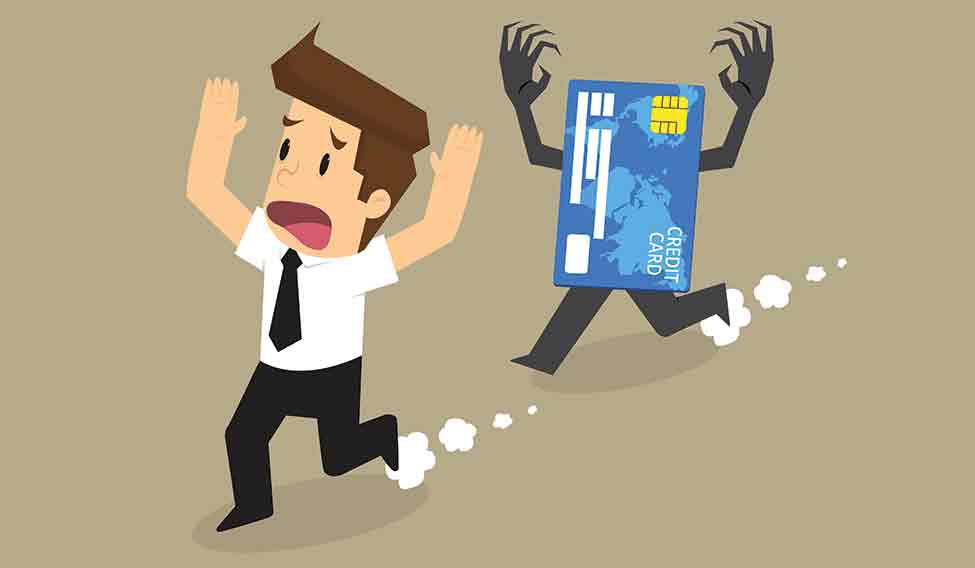Know the difference between revolving and transacting and save thousands on credit cards.
The credit card issuers love millions of ill-informed credit card holders, who help them generate big profit margins. However, privately they curse another, better informed, spending disciplined group of card holders.
Blood Suckers
Some card executives call these well-informed people “leeches” or worst. They would love to do something about them, but they can’t. This later smart group, who I will call “transactors,” cut into their profits.
“It’s critical for a consumer to know the difference between transacting and revolving,” says Bill Hardekopf, a securities industry analyst with MoneyCrashers.com
Who are transactors?
They are people I used to hear about from when I covered the card industry for a trade publication about twenty years and twenty pounds ago.
Transactors pay off credit card bills each month within the 30-day, no-interest, grace period. They force the card issuer to extend short term, zero percent, loans to them. Over the course of a lifetime, these smart people save a lot.
“Always pay off card balances whenever you can. It’s a very smart practice,” says Charles Hughes, an advisor in Bay Shore, New York.
Some card issuers quietly detest transactors. They’re bad for business. They would love to be able to charge them interest from the moment they buy something with a card. An immediate interest charge is something that, from time to time, has been quietly discussed by some card issuers, but it has been rejected for competitive reasons.
If one issuer tried to impose immediate interest charges, others would immediately scream that they wouldn’t do it and proceed to steal a lot of the competitor’s business. So this is an advantage a smart card holder can use.
Now let’s consider the card holder who gets slaughtered, Let’s call this person “a revolver.”
The revolver carries card balances from month to month. He or she makes credit card companies happy. Indeed, many revolvers, when they have reached card spending limits, often are automatically extended.
And the debt goes on and on.
Overpaying for Debt
The revolver carries the most expensive debt. It is often as much as twenty percent interest or more. That’s outrageous. One can get a mortgage for less than half that.
The card company’s defense is card debt is riskier than other kinds of loans. It is an “unsecured” asset. Card loans are unlike a mortgage on a house. The bank can always take it back in a default. The rate of bad card loans will often go through the roof during hard times such as the last recession.
At twenty percent card interest or more, you, Mr. or Ms. Revolver, pay through the nose. It will take much longer to get out of debt than the transactor. He or she retires the card debt every month. Over 30 or 40 years, this smart person saves a small fortune.
The Benefits of Transacting
Let’s take someone who charges on average $10,000 a year. Over 30 or 40 years, how much does the revolver pay and how much does the transactor pay?
The latter is easy: For the faithful transactor, the person retiring card debt every month, it amounts to a big round number: zero.
Besides avoiding gobs of interest charges, this person usually has sterling credit. He or she is offered the best cards with the best benefits. This person rarely pays an annual card fee.
The Revolver Masochist
Now let’s consider someone getting hammered every month: the revolver.
Hardekopf emphasizes the math involved in this example means it is difficult to give an exact number because it depends on how much card debt is carried each year. However, he says, even in the smallest example, the revolver, over decades, throws away thousands.
“If I charge $10,000 in year one and only pay back $8,000, I’ll have a balance of $2,000 by the end of the year. If I’m charged 15% interest, simple math says that at the end of another full year of carrying that balance, I’d have paid $300 in interest,” Hardekopf says. He adds this is a simple example because “you’re going to be carrying more of a balance, and hence be charged more interest–because these interest charges will be added on to your balance each month.”
Hardekopf’s revolver analysis: “You’d be incurring $300 each year for however many years you have this account if your balance was always $2,000.”
Over ten years, that’s $3,000 blown. Over 20 years, that’s $6,000 gone. Over 40 years, one pays $12,000 unnecessarily.
This assumes 15 percent interest. Suppose it’s 20 percent. Then you’re paying $400 in card debt interest each year. Then it’s $4,000 lost over a decade and $16,000 over 40 years.
Don’t you want $16,000?
Whatever the individual numbers, however much you revolve, the lesson is the same.
Over decades you throw away lots if you revolve.
![]()
